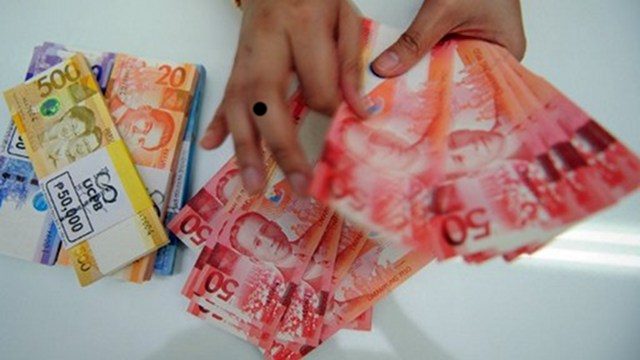SUMMARY
This is AI generated summarization, which may have errors. For context, always refer to the full article.

MANILA, Philippines – Investment bank ING Bank Manila said on Wednesday, August 26, that the local currency is likely to breach the P47 to $1 level in the near-term.
It could even head toward P47.40 or P47.50 in the absence of global response to emerging markets’ risks and stability.
Joey Cuyegkeng, senior economist at ING Bank Manila, said the country’s economic fundamentals remain favorable and that the recent weakness was externally driven.
He said the investment bank could further revise its foreign exchange forecast to the weaker side after setting a new assumption of P46.50 to $1 versus the previous projection of P45.50 to $1.
The year-to-date average of the peso is currently at P44.80 to $1, well within the government’s budget assumption of P43 to P46 versus $1.
Bangko Sentral ng Pilipinas (BSP) Governor Amando M. Tetangco Jr said Wednesday that the weakening of the peso against the greenback is in line with the weakness of currencies in the region.
“Moves by major central banks spark financial market volatility. In our case, while we’ve seen volatility in the peso and stock markets, these have been somewhat in line with the region,” Tetangco said.
He added that for the BSP’s part, it is watching closely that the moves in the peso are not excessive, checking to see if there is real demand behind the moves.
The peso lost 11 centavos to close at P46.72 to $1 compared to Tuesday’s P46.61 to $1. The peso opened weaker at P46.73 and hit an intraday low of P46.74 and an intraday high of P46.57.
Volume reached P901.1 million from P765.2 million Tuesday.
Monetary authorities are closely monitoring external developments, including the impending rate increase by the US Federal Reserve (US Fed), the debt crisis in Greece, the economic growth in China, among others.
After devaluing the Chinese yuan on August 10, the People’s Bank of China slashed the benchmark lending rate by 25 basis points to 4.6% and reduced reserve requirements for major big banks by 50 basis points to 18%.
Tetangco said that analysts think the actions of Chinese authorities may delay the US Fed’s action, but warned that the latter “may have considerations that we don’t see or appreciate.”
So while remaining sensitive to signals from the US Fed, it’s best to make sure we have the tools in place to shield our own markets from near-term shocks. It’s important not to be distracted from the medium-term reform agenda,” he said.
Better Q2 growth
Cuyegkeng said better second quarter growth than first quarter performance would allow the BSP to remain vigilant against financial market volatility that may arise from sustained peso weakness.
“As long as the peso moves in line with Asian currencies, BSP is likely to keep policy settings steady for the rest of the year,” he added.
ING Bank sees the country’s gross domestic product (GDP) growing between 5.6% and 5.7% in the second quarter compared to the revised 5% in the first quarter. (READ: PH 1st quarter GDP lowered to 5%)
At the moment, the BSP sees no need to adjust interest rates amid external shocks, including the stock market rout early this week, the global economic slowdown, and the impending rate increase by the US Federal Reserve.
Tetangco said the county’s monetary policy stance remains appropriate amid the volatility in the global stock and foreign exchange markets.
He added that given the lag of monetary policy, the Monetary Board is not yet seeing the need to adjust settings – unless oil prices fall futher; El Niño intensifies and becomes extended; or global growth slows significantly or deviates from trend; or financial stability risks become heightened because of uncertainties from market views on US Fed actions.
The next policy-setting meeting of the BSP’s Monetary Board is scheduled on September 24.
The BSP has kept key policy rates steady since September 2014. The overnight borrowing rate is currently pegged at 4% and the overnight lending rate at 6%. (READ: BSP maintains policy rates, lowers inflation forecast)
“For our next policy moves, we’ll need more data to see if there is need to support demand or manage inflation expectations,” Tetangco said. – Rappler.com
Add a comment
How does this make you feel?
There are no comments yet. Add your comment to start the conversation.